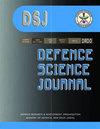Effect of Aviation Turbine Fuel Exposure on Interlaminar and Inplane Shear Properties of Glass Fiber Reinforced Epoxy Composite
IF 0.8
4区 工程技术
Q3 MULTIDISCIPLINARY SCIENCES
引用次数: 1
Abstract
This study investigated the effect of aviation turbine fuel exposure on interlaminar and in-plane shear properties of E-glass/epoxy composite. The two types of test specimens, namely bare and resin-coated specimens with varying thicknesses as per the ASTM standard, were made out of E-glass/epoxy composite to evaluate their interlaminar and in-plane shear properties. These all types of specimens were immersed inside the aviation turbine fuel for two months and then afterward their effect on the reduction of mechanical properties like interlaminar and in-plane shear tests properties were experimentally investigated. Test results show that ATF fuel exposure has reduced the interlaminar shear strength by 10.04 %, 7.83 %, and 6.01 % for bare, with 0.1 mm and 0.2 mm resin coating, respectively. Similarly, in-plane shear strength was reduced by 14.75 %, 11.22 %, and 7.52 % for bare, with 0.1 mm and 0.2 mm resin coating, respectively, and in-plane shear modulus was reduced by 10.87 %, 8.94 %, and 6.52 % for bare, with 0.1 mm and 0.2 mm resin coating conditions as compared to as-received (without ATF exposure) specimens.SEM micrographs and results too showed that properties were reduced and indicated that the glass/epoxycomposite was resistive to fuel ingression. It was observed that bare specimens exhibited a reduction in shearproperties due to ATF ingression to the polymeric network and induced internal stresses, which not only degraded the matrix and fiber-matrix adherence but created micro-cracks too in the resin at interfaces. Resin-coated specimens limit fuel ingression, which has led to a reduction in properties.航空涡轮燃料暴露对玻璃纤维增强环氧树脂复合材料层间和层内剪切性能的影响
本研究研究了航空涡轮机燃料暴露对E-玻璃/环氧树脂复合材料层间和平面内剪切性能的影响。两种类型的试样,即根据ASTM标准具有不同厚度的裸试样和树脂涂层试样,由E-玻璃/环氧树脂复合材料制成,以评估其层间和面内剪切性能。将所有类型的试样浸入航空涡轮机燃料中两个月,然后通过实验研究它们对机械性能降低的影响,如层间和平面内剪切试验性能。试验结果表明,ATF燃料暴露使裸层、0.1mm和0.2mm树脂涂层的层间剪切强度分别降低了1004%、7.83%和6.01%。类似地,与收到的(未暴露ATF)试样相比,在0.1mm和0.2mm树脂涂层条件下,裸试样的面内剪切强度分别降低了14.75%、11.22%和7.52%,而在0.1mm或0.2mm树脂涂覆条件下裸试样的平面内剪切模量分别降低了10.87%、8.94%和6.52%。SEM显微照片和结果也表明性能降低,并表明玻璃/环氧复合材料对燃料进入具有抵抗力。据观察,由于ATF渗入聚合物网络并引发内应力,裸试样的剪切性能降低,这不仅降低了基体和纤维基体的粘附性,而且在界面处的树脂中也产生了微裂纹。树脂涂层试样限制了燃料的进入,这导致了性能的降低。
本文章由计算机程序翻译,如有差异,请以英文原文为准。
求助全文
约1分钟内获得全文
求助全文
来源期刊

Defence Science Journal
综合性期刊-综合性期刊
CiteScore
1.80
自引率
11.10%
发文量
69
审稿时长
7.5 months
期刊介绍:
Defence Science Journal is a peer-reviewed, multidisciplinary research journal in the area of defence science and technology. Journal feature recent progresses made in the field of defence/military support system and new findings/breakthroughs, etc. Major subject fields covered include: aeronautics, armaments, combat vehicles and engineering, biomedical sciences, computer sciences, electronics, material sciences, missiles, naval systems, etc.
 求助内容:
求助内容: 应助结果提醒方式:
应助结果提醒方式:


